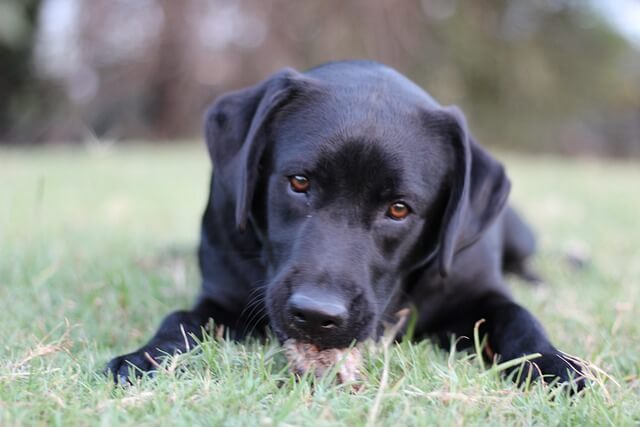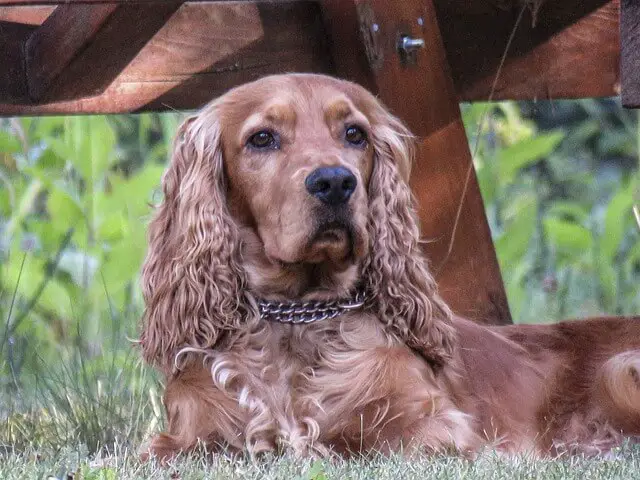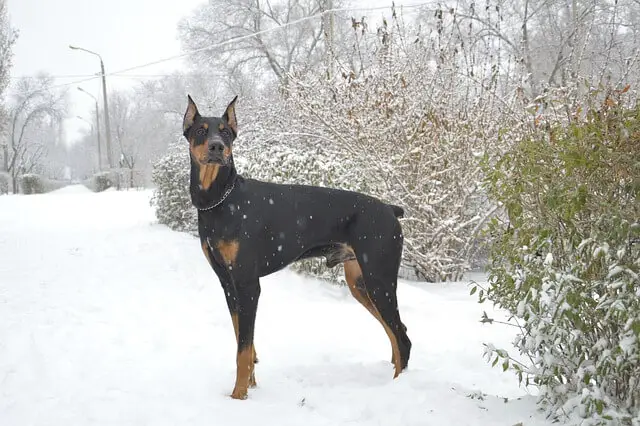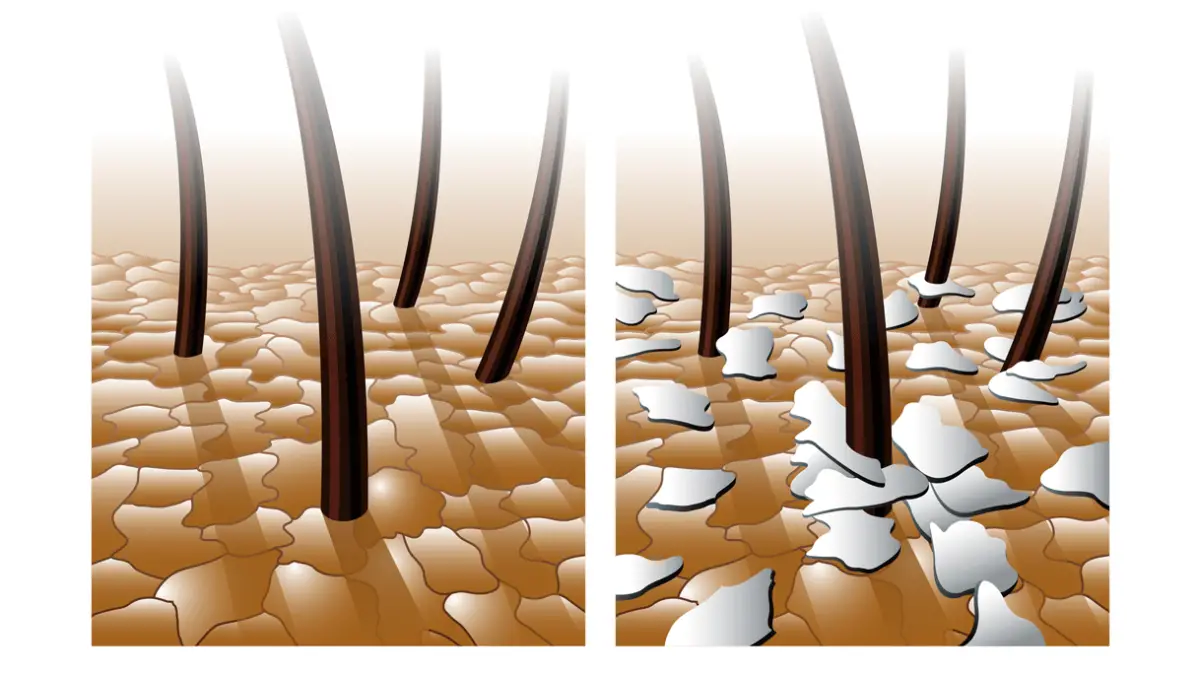Dog Dandruff - Common Causes & Treatment
23.05.2021.
You probably saw the commercials for shampoos that can help us get rid of dandruff. As soon as we do, someone will run their fingers through our hair while we wear a black T-shirt so they can easily see we don’t have any dandruff problems. It made us cringe a bit, but the problem is far too real not only for us but for our dogs as well.
Dog dandruff might seem similar to ours, but when our four-legged friends get dandruff, it is usually a sign of other issues. The best thing you can do for your dog is to take them to the vet. If you notice these tiny white flakes on your dog’s coat, you should know they will not go away just like that. Here is what you should know about dog dandruff.
What is dog dandruff?
Dog dandruff is actually dead skin cells. They might be clearly visible if you have a dog with a dark coat. However, on light-coated dogs like Labradors or American Eskimo Dogs, spotting dog dandruff can be challenging. You can usually see it when you examine the place your dog has been napping. You can clearly see they left a trail of tiny white flakes.

What causes dog dandruff?
There are many possible causes of dog dandruff, and most will require a bit of effort from your side to get treated. Before your vet determines the actual cause, they will have to examine your dog. They will look at their entire coat and determine whether the flaky skin is isolated to one area or present on the dog’s whole body. Here are some of the most common dog dandruff causes;
Skin infections
Your dog can get dandruff as a result of having a skin infection. Bacterial or fungal infections will lower the skin’s ability to protect itself and drags your dog into a vicious circle of skin problems. In most cases, skin infections will cause hot spots or greasy patches, but in some cases, they can cause flaking and dandruff.
How to treat it?
Bacterial or fungal infections are usually treated with ointments, topical antibiotics, or oral antibiotics. When the treatment cycle is done, the dandruff issue should be sorted out. However, the correct treatment will have to be determined by your vet. You shouldn’t try to help your dog without consulting your vet because you can cause more problems.
Seborrhea
Seborrhea is a health issue that allows skin cells to “travel” to the surface too fast. The “glue” keeping the cells in place isn’t potent enough and allows them to reach the surface where they die and look like flaky, greasy skin. Vets are not entirely sure what causes it, and some breeds like the Westie, Doberman, and Cocker Spaniel are prone to it.

How to treat it?
Seborrhea can be tricky to treat, but generally, vets advise one of these things based on the severity of your dog’s condition; prednisone, retinoids, oral cyclosporine, seborrhea shampoo, and omega fatty acid supplements. In some cases, vets may prescribe antibiotics for secondary bacterial infection treatment.
Mites
In some cases, dog dandruff is not actually dandruff - it is mites. Dog owners can confuse the two, especially if these mites are something they haven’t come across before. To be more precise, these mites are called Cheyletiella mites, and they have a convenient nickname - Walking dandruff. They are large enough to notice with the naked eye. They can cause redness, itchiness, inflammations and make your dog’s life miserable.
How to treat it?
Mites are skin parasites naturally present in human and dog skin. The body’s natural defense systems usually keep their numbers in check. However, if your dog’s health is compromised, these parasites can grow in numbers and start causing problems. Mites are usually treated with anti-parasitic dog shampoo. You can get your dog checked out, and when the vet confirms the mite species, they will let you know what the best choice for your dog is. In the meantime, you can read more about dog mites here - Mites in dogs.
Poor diet
Another common cause for bad skin, coat, and dog dandruff is poor diet. If your dog isn’t getting all the necessary nutrients from their diet, their skin will likely be the first to suffer consequences. Their coat will get thinner, and the hair will start falling out, so make sure your dog has a balanced, high-quality diet.

How to treat it?
The best way to treat this type of dog dandruff is to improve your dog’s diet. Make sure you provide high-quality dog food rich in omega fatty acids, vitamins, minerals, and high-quality protein sources. Another thing you can do is add omega fatty acid supplements to your dog’s diet.
Humidity
Sometimes, dog dandruff can appear due to low humidity. Dry skin is prone to flaking, and if you live in dry areas or turn the heating up in your home, your dog can start scratching too much, and their skin will get dry in these conditions.
How to treat it?
The best way to treat dry skin in dogs is to add omega fatty acid supplements to your dog’s diet. Dog foods based on salmon and other fish will naturally be rich in omega fatty acids, so think about switching dog foods or adding supplements to your dog’s diet. Give your dog regular baths, add some vitamin E, and make sure they are regularly brushed.
Underlying health issues
Dog dandruff is usually a side effect of some other health issue. A common reason can be a problem with the dog’s thyroid glands. Glands that are not active enough will cause dog dandruff. This health issue is called hypothyroidism, and you can read more about it here - Hypothyroidism in dogs.
How to treat it?
Unfortunately, hypothyroidism is not curable. However, with proper medication, it is manageable. Your dog will have to take thyroid hormone replacement pills for the rest of their life. Still, hypothyroidism will be kept under control, and their skin condition should improve.
Expert advice
Here at World Dog Finder, we are lucky enough to work with professionals from different areas. We have prepared some expert advice regarding dog dandruff. Our in-house vets share these vet tips for dog dandruff prevention;
- Grooming - It might not seem as important, but proper grooming can prevent hot spots, redness, and infections. Make sure you groom your dog regularly.
- Shampoo - There are different types of dog shampoo that are designed to hydrate your dog’s skin. You don’t want to medicate your dog immediately, try specialized dog shampoo first. You might be surprised how effective they are.
- Diet - There is nothing more important than a proper diet. Well-balanced, high-quality dog food can prevent all sorts of health issues, and dog’s skin is susceptible to their diet.
- Vet appointments - A common mistake dog owners make is - they skip their vet appointments. Just because your dog seems fine doesn’t mean they shouldn’t be treated for parasites or skip a vet appointment. Your vet might notice things you miss, and early detection and treatment are the keys in many health problems.
World Dog Finder team







Share